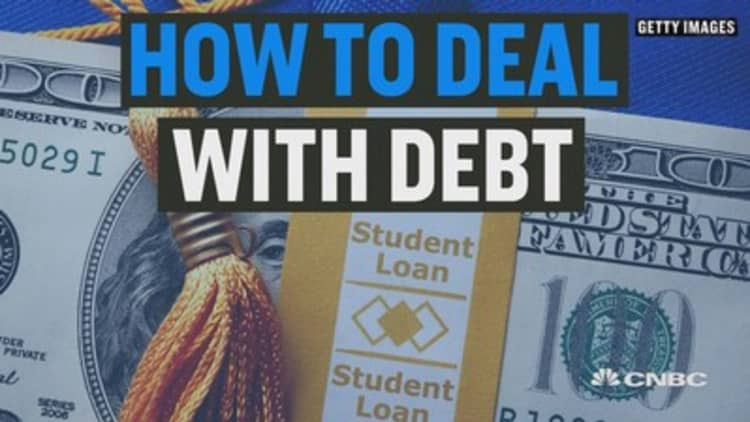
If you've recently graduated and skated through the summer without too much thought about your student loan debt, the jig is up.
Seven in 10 seniors graduate with debt, owing over $34,000, on average, according to a recent report by Experian.
However, the majority of borrowers, 56 percent, don't know the interest rate on their student loans and 59 percent said they didn't know the repayment term, according to a separate report by Millennial Personal Finance.
Only 14 percent of students were confident they could repay their college debt at all, Millennial Personal Finance said.
On the upside, for federal loans at least, which make up the bulk of student debt, there is generally a six-month grace period after graduation that gives borrowers time to get on their feet before they have to start repaying their loans. That time is now up.
"It's like running around trying to do your taxes in April," said Andrew Josuweit, CEO and president of Student Loan Hero, a student-loan management site. "We're all procrastinators, the same thing applies here."
For graduates uncertain about what happens next, here's what to know:
Step 1: Know your loans
Many borrowers have several loans, each potentially with a different interest rate, monthly due date and repayment period.
Start with a list of the number of loans you have, the provider and the interest rate, advises John McCafferty, an associate director of financial planning at Edelman Financial Services.
Then go to the Department of Education's central database for student aid to get a handle on repayment options and terms for federal student loans. For private loans, call each lender to find out what your monthly payments are and when they are due. Sites like Student Loan Hero can also provide a dashboard-type overview for borrowers.
Step 2: Update your contact info
Chances are you've moved, changed your email address and have a new cellphone. Make sure each lender can reach you. "It's easy for a loan servicer to lose track of you, and if you're not getting statements you could go into default by accident," Josuweit said.
Step 3: Monitor your cash flow
Take your income minus expenses, including your rent and monthly loan tab, to determine if you can afford your loan payments.
If you can't, look into federal income-based repayment programs, which allow you to pay a percentage of your income rather than a flat rate, as long as you are under a certain income threshold. Generally, you'll qualify if your federal student loan debt is higher than your annual discretionary income, according to the Education Department.
If you don't have a job yet, or are pursuing a graduate degree, consider a deferment or forbearance. A deferment lets you put your loan on hold for up to three years. If you don't qualify for a deferment, a forbearance lets you temporarily suspend payments for up to one year. However, in this case, interest will still accrue. In each case, borrowers must apply for permission to postpone payments.
Step 4: Register for autopay
If you can afford your payments, sign up for autopay. An automatic program will decrease your chances of missing a payment and may come with the added perk of an interest rate deduction on your loan.
Step 5: See if your employer will chip in
More employers now are offering student-loan repayment benefits to their workers, which can help recent grads pay down their debt.
Only 4 percent of U.S. employers provide student-loan repayment perks, according to the Society for Human Resource Management, up from 3 percent last year. However, that number is expected to continue to rise.
If you are job hunting, give extra weight to the employers that do offer a repayment program, McCafferty said. "Look at it as a means to gain experience in the workforce and also address some of your debt."
Step 6: Consider consolidating or refinancing
Once you have a steady job, a salary and a credit history, call a few lenders or talk to a financial advisor about your options. If you have several different loans, you might consider consolidating them. Or you may be able to refinance at a lower interest rate. You could also choose to extend the terms beyond the standard 10 years to lower your monthly payments, Josuweit said.
But weigh the options first, he cautioned. Consolidating or refinancing to a private loan will forgo the safety nets that come with a federal loan, including income-based repayment programs and loan forgiveness, for those who would qualify. Additionally, extending the term of the loan means you ultimately will pay more interest on the balance.
Keep in mind, "when you are paying off your student loans, you are always going to feel like you're broke," Josuweit said. "It's important to realize that you are not alone. There are a lot of other people in the same situation."
More from College Game Plan:
Student loan balances hit record $1.4 trillion
Borrowing for college has a psychological toll
Skip the college degree and the debt




